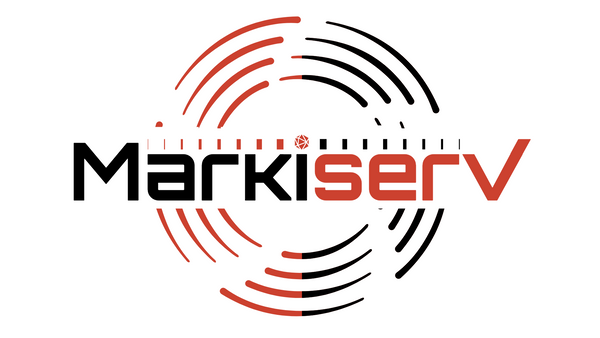
The Ultimate Guide to Advertising on Snapchat: Benefits, Setup, and Strategies for Success
Share
In the fast-paced world of digital marketing, staying ahead means embracing innovative platforms. Snapchat, with its youthful and engaged user base, offers unparalleled opportunities for businesses aiming to connect with Gen Z and millennials. As a pioneer in ephemeral content, Snapchat’s ad offerings enable brands to tell stories, drive conversions, and foster deeper customer connections.
If you’re ready to make Snapchat a key part of your advertising strategy, this comprehensive guide will cover everything you need to know—from why you should advertise on Snapchat, to how to set up your account, to expert tips for crafting high-performing campaigns.
Why Choose Snapchat for Advertising?
Snapchat isn't just another social media platform; it’s a playground for creativity and connection. With over 375 million daily active users, Snapchat provides brands with unique tools to engage audiences in innovative ways. Here are key reasons to consider it as part of your marketing strategy:
1. Access to a Younger Demographic
Snapchat is dominated by Gen Z and millennials, with 75% of users aged 18–34. For brands targeting younger audiences, Snapchat is a direct gateway to your ideal customer.
2. High Engagement Rates
Snapchatters open the app over 30 times a day on average, making it one of the most engaging social media platforms available. Whether users are sending snaps, exploring Discover content, or playing with AR lenses, they’re consistently active.
3. Creative Ad Formats
Snapchat’s advertising options are built for interaction and creativity:
- Snap Ads: Vertical video ads that integrate seamlessly into user feeds.
- Story Ads: Collections of snaps displayed in the Discover section.
- Collection Ads: Showcasing multiple products with swipe-up functionality.
- Filters and Lenses: Immersive AR experiences that boost brand recall.
4. Flexible Budgets and Targeting
Snapchat ads cater to businesses of all sizes. Whether you’re running a small local campaign or a global launch, you can start with as little as $5 per day. Advanced targeting options like location, demographics, interests, and behaviors ensure your message reaches the right audience.
How to Set Up a Snapchat Business Account
Before running your first campaign, you’ll need to establish your presence on Snapchat Ads Manager. Follow these steps:
Step 1: Create Your Ads Manager Account
- Visit the Snapchat Ads Manager website.
- Click Get Started and register using your business email.
- Fill out the required details: business name, address, and phone number.
- Verify your email to complete registration.
Step 2: Set Up Your Business Profile
A professional profile adds credibility and helps with brand consistency:
- Upload your business logo and bio.
- Link your website and social media profiles.
- Add a payment method for seamless campaign execution.
Step 3: Install Snapchat Pixel
Snapchat Pixel is a tracking code that allows you to:
- Measure website traffic generated by your ads.
- Monitor user behavior, such as purchases or sign-ups.
- Retarget users who’ve interacted with your site.
Step 4: Define Your Campaign Objective
Snapchat Ads Manager provides several goals to align your campaigns with your business objectives:
- Awareness: Increase brand recognition.
- Consideration: Drive website traffic, app installs, or video views.
- Conversions: Generate leads, sales, or specific actions.
Step 5: Choose Your Target Audience
Snapchat’s targeting capabilities allow for precise audience segmentation:
- Select demographics like age, gender, and language.
- Use interest-based targeting to reach users who engage with similar content.
- Create Custom Audiences by uploading email lists or leveraging Pixel data.
Step 6: Launch Your First Campaign
With your objectives, audience, and budget set, you’re ready to create your first ad. Navigate to Create Ads in Ads Manager and follow the prompts to design and launch your campaign.
Snapchat Ad Formats Explained
Each Snapchat ad format serves a unique purpose, allowing brands to tailor their campaigns for maximum impact:
1. Snap Ads
- Best for: Driving quick engagement.
- Details: These vertical video ads appear between user-generated content. They’re full-screen, immersive, and include swipe-up options.
2. Story Ads
- Best for: Building brand narratives.
- Details: Found in the Discover section, these ads let you create a series of connected snaps to tell a cohesive story.
3. Collection Ads
- Best for: Showcasing products.
- Details: These ads feature tappable tiles for multiple products, perfect for e-commerce businesses.
4. AR Lenses and Filters
- Best for: Brand awareness and interaction.
- Details: Custom-designed AR experiences allow users to engage with your brand playfully.
Tips for Designing Effective Snapchat Ads
Snapchat’s highly visual platform demands creativity. Here’s how to make your ads stand out:
1. Prioritize Mobile-First Content
Snapchat is a mobile-only app. Use vertical video formats optimized for small screens.
2. Capture Attention Quickly
Users scroll fast—hook them in the first 3 seconds with bold visuals, concise messaging, and dynamic motion.
3. Leverage User-Generated Content (UGC)
UGC-style ads feel authentic and relatable, resonating with Snapchat’s audience.
4. Use Interactive Elements
Incorporate AR filters, polls, or quizzes to boost engagement.
5. Test Audio
Many users watch Snapchat with sound on. Include music, voiceovers, or sound effects to enhance your message.
Advanced Strategies for Snapchat Advertising Success
1. Run A/B Tests
Experiment with variations in ad copy, visuals, and CTAs to identify what works best for your audience.
2. Implement Retargeting
Re-engage users who have visited your website or engaged with your ads using Snapchat Pixel.
3. Leverage Dynamic Ads
Dynamic ads automatically update with your product catalog, showing users relevant products based on their browsing history.
4. Stay Relevant
Align your campaigns with trending topics, seasonal events, or viral challenges.
5. Monitor and Optimize
Use Snapchat’s analytics tools to measure performance and adjust strategies. Key metrics include:
- Impressions: Total views.
- Swipe-Ups: Number of users who interacted with the ad.
- Conversions: Actions taken after viewing the ad.
Best Practices for AR Lenses and Filters
Branded AR experiences can supercharge your campaigns:
- Be playful: Use animations, games, or challenges.
- Encourage sharing: Design filters that users will want to send to friends.
- Track performance: Measure engagement rates and time spent interacting with your lens.
Snapchat Advertising Success Story
FreshBites, a meal delivery service, achieved significant growth using Snapchat ads:
- Campaign Objective: Drive app installs and subscriptions.
- Strategy: A combination of Snap Ads and Collection Ads targeted at health-conscious users.
- Results: A 20% increase in app installs and a 30% boost in weekly subscriptions within three months.
Conclusion
Advertising on Snapchat unlocks a world of possibilities for brands seeking to engage younger audiences. From its innovative ad formats to its robust targeting and tracking tools, Snapchat empowers marketers to create memorable campaigns that drive results.
Now that you understand the ins and outs of Snapchat advertising, it’s time to take action. Leverage this platform’s creativity and connectivity to elevate your brand to new heights.
Would you like assistance crafting compelling Snapchat ad copy or designing custom AR filters for your campaigns? Let’s make your vision a reality!
Helpful Links:
HubSpot's Snapchat Advertising Guide A comprehensive beginner-friendly guide with actionable tips for Snapchat marketing.
YouTube: Snapchat Ads Tutorial 2024 A curated selection of video tutorials to guide visual learners through Snapchat advertising.
